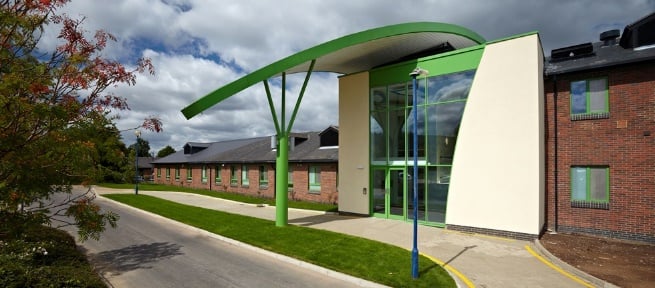DIGITAL REMINISCENCE THERAPY – Digital reminiscence therapy is a relatively new tool in the fields of nursing and healthcare; it encompasses the use of user-friendly interactive computers to blend entertainment with therapy and to assist patients (particularly with memory impairments) in recalling and sharing events from their past through listening to music, watching news reports of significant historical events, listening to war-time speeches, playing games and karaoke, browsing the internet, viewing old maps and photographs, making video calls and also for watching films (and significantly, this list is likely to get longer).
THE BENEFITS – There is a growing evidence base supporting the use of digital reminiscence therapy as a tool to improve the experience of patients in hospital and other care settings through generating interest, curiosity and conversation, and improving rapport-building, communication and engagement; other benefits include reducing anxiety and agitation levels for distressed patients by providing a means of stimulation and distraction that can help with their symptoms.
A BRIEF SEARCH OF CURRENT LITERATURE – In preparation for writing this article a literature search was carried out using the National Institute for Health and Care Excellence (NICE) ‘Open Athens’ electronic database of journals (accessible online via https://openathens.nice.org.uk/). The search was carried out on 17th December 2018 and included the following databases; MEDLINE, EMBASE, CINAHL, PsycINFO, AMED, British Nursing Index, HMIC and Health Business Elite. A full search of these databases using the search terms, “nursing” and “digital reminiscence” yielded only five results; which highlights that the emerging applications of such digital technology within the field of nursing are still in their infancy.
A NEW AREA OF APPLICATION – Much of the current literature on this subject is focused on the use of digital reminiscence therapy to add value to the experiences of patients with dementia; however, the use of this technology at Charlton Lane Hospital goes beyond this, and has allowed older age patients with functional and non-organic mental illnesses to also access the same therapeutic benefits.
CASE STUDY (CHARLTON LANE HOSPITAL) – Charlton Lane Hospital is an inpatient mental health unit for older age adults serving the county of Gloucestershire; there are three wards with a total of 48 beds; two wards specialising in the assessment and treatment of functional and non-organic mental illness and one ward specialising in dementia care. Recently each ward at Charlton Lane Hospital has acquired a digital reminiscence computer and additional equipment which allows these computers to be connected wirelessly to larger television screens, making the experience of using this technology one which can be shared in large groups as well as on a one-to-one basis. The computers currently in use are made by a company called ‘My Improvement Network’ and are known as ‘RITAs’ (Reminiscence Interactive Therapy Activities); the wireless connection to the televisions is provided through a device known as a ‘Miracast dongle’ which connects to the television via HDMI (although some more modern ‘smart’ televisions may not require this device and may have the hardware to connect with the RITA already built-in).
IMPROVING ENGAGEMENT – This technology is proving extremely popular at Charlton Lane Hospital and has transformed how staff and patients’ complete assessments and participate in treatment by providing activity and engagement opportunities which generate excitement and seemingly improve the motivation to participate in therapy for some patients who may otherwise not engage so readily with staff and treatment. The use of digital reminiscence therapy has proven to be very effective in supporting the development of rapport between staff and patients, as well as enhancing the overall therapeutic environment and atmosphere of the hospital. In the short time that the RITAs have been in use at Charlton Lane Hospital it has become clear that there are many significant benefits to the growing use of digital reminiscence therapy in nursing and healthcare for patients with a varying range of mental health problems and it is interesting to consider the possible roles and applications of evermore advancing digital technologies in the field of mental health nursing in years to come.
COLLABORATIVE WORKING – As time has passed, ways for professionals and patients to work together have developed, with technology becoming increasingly common both in and out of hospital. Digital reminiscence therapy has given staff a new means of assessing and interacting with patients that can be tailored to each individual, in turn, supporting the patient in having a more personalised experience by adding value through choice and providing bespoke care. Another advantage that has been noted is the ease with which staff from different professional disciplines can use the technology, as having a common method of engaging patients can mean that staff can develop an improved understanding of how to best use digital reminiscence therapy with an individual or group. At Charlton Lane Hospital, this technology is being used by both nursing staff and allied health professionals in a joint effort to reduce falls and injury, provide health education, and to improve rehabilitation whilst continuing to build on the success that has already been achieved.
WHAT THE FUTURE MAY HOLD – Another emerging technology which could be innovatively incorporated into digital reminiscence therapy is that of ‘virtual reality’; this is an artificial, computer-generated three-dimensional environment which can be viewed and interacted with by a person using an electronic headset, and even gloves and boots which are fitted with sensors. The user is then immersed into a virtual environment in which they are able to interact and explore. This is not a new concept and has its origins embedded in the world of science-fiction, but in recent years this technology has become a reality.
A WORD OF CAUTION – With a number of virtual reality products available on the market already and the certainty that such technology will continue to be further developed and improved, whilst consumer costs reduce over time, it is possible that this technology could be the next to be exploited to enhance and improve the experiences of patients in hospital. The lack of literature relating to current use of digital reminiscence therapy not only emphasises the emerging nature of this use of such technologies, but also highlights that more research and guidance is needed. This would need to include other areas of potential application, its effectiveness and any contraindications; particularly before exploring therapeutic uses of virtual reality within the field of mental health nursing and the complications that this may bring for patients who may already be experiencing perceptual disturbances.



